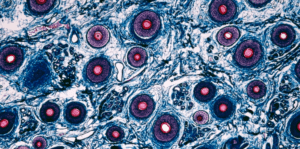
03 Jul Protecting Your Skin: Self-Tanners and Sunscreen
The single most important thing you can do to protect your skin is to reduce sun exposure. That means using sunscreen, wearing protective clothing, and limiting your time outdoors when the sun is strongest.
Beyond that, there are steps you can take to manage the problems of aging skin ranging from dryness to wrinkles. To keep your skin looking its best, take care to treat it gently, keep it hydrated, and report any changes you notice to your doctor immediately.
While the sun’s ultraviolet (UV) rays are by far the biggest factor leading to skin damage, several other factors can also contribute. Here’s a rundown of the key hazards, starting with sunlight, and what to do about them.

Sun damage
Sun damage is responsible for photoaging, the leading cause of skin damage as you age. For enthusiasts of the great outdoors, sun protection is not an easy task. But careful selection and application of a sunscreen can go a long way toward preventing further skin damage (see “Sunscreen Tips” for how to apply sunscreen). Reference the Environmental Working Group’s 2017 sunscreen guide to help you choose which sunscreen is best for you.
It’s also important to wear protective hats and other clothing when outdoors in the sun. Choose a hat with a wide brim that extends two to three inches to shade your neck, nose, and ears (a baseball cap doesn’t cut it). Also wear clothes with a tight weave, long sleeves, and long legs. Companies like Sun Precautions/Solumbra make special sun-protective clothing.
But even the most scrupulous use of sunscreens and protective clothing is not as effective as minimizing exposure to dangerous UV light in the first place. The sun’s rays are most intense between 10 a.m. and 2 p.m., so if you’re going to be spending time outside, try to do so in the early morning or late afternoon. Stay in the shade when possible and be aware of reflected light from water, sand, and snow (in winter).
Don’t forget to look after the younger generation as well by protecting your children or grandchildren from sun exposure. Most sun damage that leads to skin cancer occurs early in life.
Medications
If you’re taking certain medications, sun exposure can cause additional damage to your skin. Such drugs called photosensitizers increase your sensitivity to UV radiation. Reactions include overly reddened skin, hives, swelling, and itchy, scaly skin. Cataracts and damage to blood vessels or the immune system also may occur.
Some of these drugs such as heart medications are more commonly taken by people as they get older. It’s important to check with your doctor to determine whether any of the drugs you’re taking could cause photosensitivity.
Infrared radiation
A less common cause of skin damage is exposure to infrared radiation (heat). It’s not a major cause of skin damage, but researchers believe that it may add to the effects of UV rays. Some exposures may occur on the job—think of the short-order cook who stands over a hot stove or in front of infrared heat lamps all day. Infrared heat lamps also are used to heal some muscle injuries or to relieve pain and stiffness from osteoarthritis.
Cigarettes
Cigarette smoking has long been recognized as a cause of wrinkles. Tobacco smoke exposure decreases blood flow in the smaller vessels, possibly damaging the connective tissue that helps maintain the skin’s smooth appearance.
Cigarette smoking is also associated with a loss of skin elasticity. Plus, smokers suffer much more severe photodamage from sunlight than they would with either smoke or UV radiation by itself. The very worst thing you can do to your skin is to smoke at the beach!
Smoking-related wrinkles may not appear for a decade or more after the first puff, but damage occurs with every cigarette smoked. A study of 79 pairs of identical twins where only one twin smoked (or smoked at least five years longer than the other) revealed striking differences in their faces. A panel of judges who didn’t know which twin was the smoker gave worse scores to the smokers for bags under the eyes, nasolabial folds, upper lip wrinkles and jowls. Considering how harmful smoking is, not just to your skin but to every other part of your body, the healthiest choice is to avoid cigarettes.
Irritants
Skin becomes thinner and doesn’t heal as easily as you age so take care in handling and working with irritants. Substances that are very acidic or alkaline can damage the skin’s top layer and leave it susceptible to infection. You may encounter them on the job in industrial settings where solvents are used. Dust and smoke, such as those from tobacco and wood, as well as gases like mace or tear gas, can damage skin too.
But if you wonder about the kind of irritation caused by vigorous scrubbing of your skin, you can rest easy. Scrubbing generally doesn’t damage skin or cause wrinkles.
Facial expressions
Laughter may be the best medicine, but there’s no getting around the fact that the facial expressions that go with it can add to creases and lines that develop through the years. Facial expressions are an important part of communication, however every time you smile, squint, or frown, facial muscles contract and cause accordion-like creases to form in your skin. Young skin bounces back. But as aging skin loses its elasticity and firmness, those lines tend to become etched in the skin. Even sleeping with your face scrunched in a pillow at night may cause some lines to gradually appear.
No one would advise you to maintain a stony expression all day to solve this problem. But if you want to go to the trouble, maintaining a pleasant, relaxed facial expression instead of a scowl is a helpful strategy and you might try to sleep in a position that does not press your face into the pillow.
Tanning without the sun
Tanning beds which expose you to UV radiation are best avoided altogether. The UV radiation in tanning beds can be 10 to 15 times more powerful than the midday sun. People who frequently go to tanning salons can end up getting 1.2 to 4.7 times the dose that people get from normal sun exposure in a year. That’s in addition to any routine sun exposure they get. Regular use of tanning beds increases the risk of melanoma by 74%, as well as the chances of getting basal cell and squamous cell cancers.
If you are concerned about getting enough vitamin D, visiting a tanning salon or soaking up lots of sunshine is not the answer. Vitamin D from a healthy diet and dietary supplements offer the same benefits as vitamin D obtained from sunlight—without the danger of skin cancer.
If golden skin is important to you, self-tanning and bronzing products are a more effective alternative than they used to be. They no longer turn your skin the color of a pumpkin and the chemicals appear to be safe when used as directed. Most products use dihydroxyacetone (DHA), a colorless chemical derived from glycerin, which reacts with the amino acids in the outer layers of skin. You can also reference the Environmental Working Group‘s list of non-toxic self tanners. Thicker, protein-rich areas of your skin will stain more, so for more even results, you should exfoliate the skin of the elbows, knees, and ankles beforehand using a washcloth, sponge or loofah, for example. Because the coloring process takes place only in the surface layers of the skin, your “tan” lasts only as long as those layers stay on your body— five to seven days. After they slough off , you’ll need a reapplication.
Manufacturers have also begun adding anti-aging and moisturizing agents, antioxidants and botanical ingredients to their products, and some allow you to build a tan slowly with repeated applications. Remember though, sunless tanners do not protect you from the sun’s rays so be sure to use sunscreen when you’re outside.
Self-tanners are available in many forms, including lotions, creams, and sprays that you apply and let soak in to your skin. The FDA cautions users to take care not to get the product in the eyes, nose, or mouth. The FDA has not approved DHA-infused spray- tanning products for use on any part of the body that is covered by a mucous membrane. You should also avoid ingesting sunless tanning products, as the safety of DHA when ingested is unknown.
If you visit a salon that applies such products for you, the FDA recommends first asking these three questions about safety:
- Will my eyes and the area surrounding them be protected?
- Will my nose, mouth, and ears be protected?
- Will I be protected from inhaling the tanning spray through my nose or mouth?
If the answer to any of these questions is “no,” look for another salon.
You should also stay away from tanning pills, which are unsafe and can even cause serious health problems.
Getting in touch
If you or someone you know suffers has skin care concerns, feel free to drop me a line. I treat patients locally at my Naturopathic practice in Vancouver, B.C. and worldwide via phone or Skype.
To your best health!
Dr Tasnim Adatya
Naturopathic Physician, Menopause Clinician, Acupuncturist, and Health Educator

